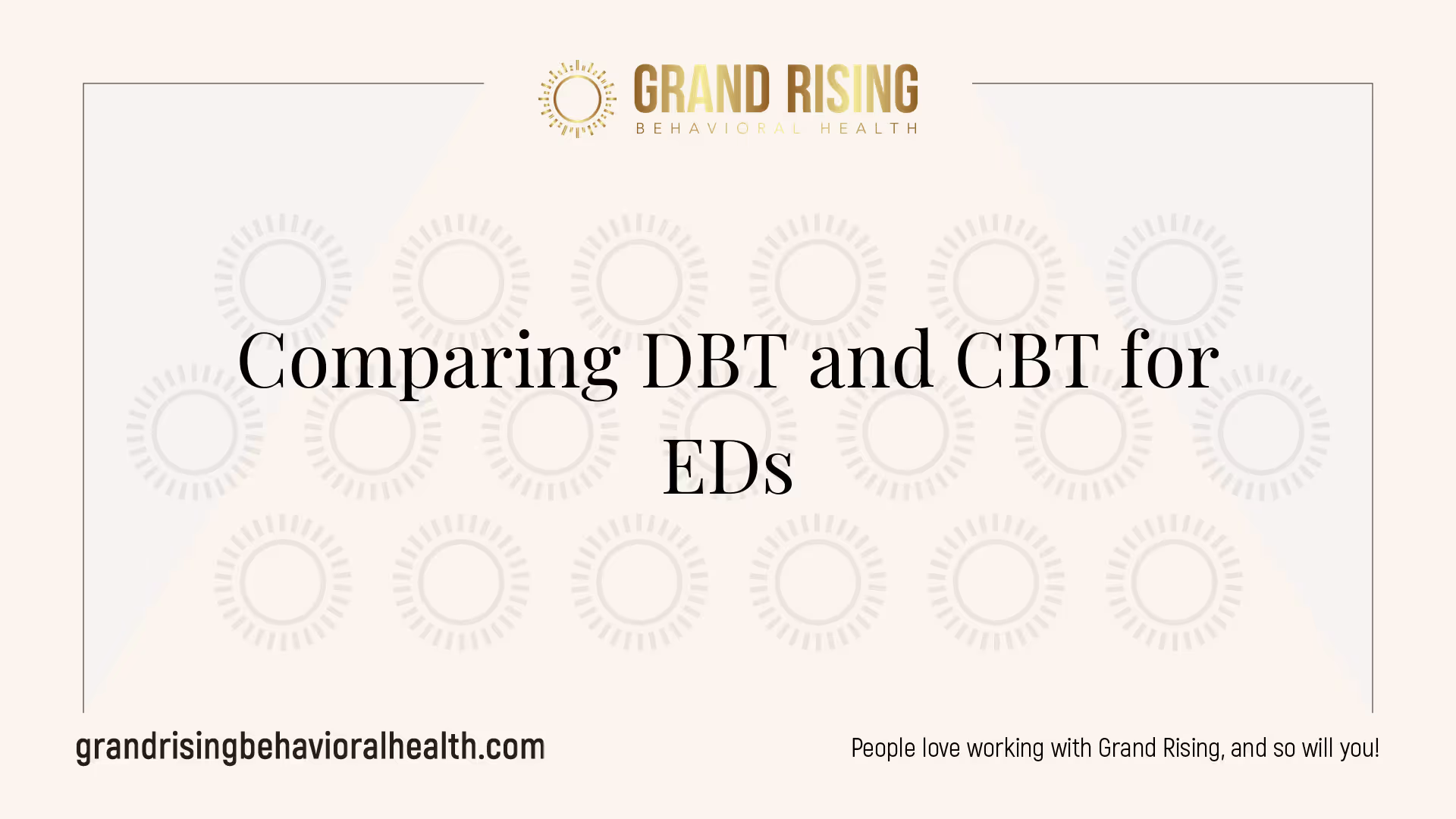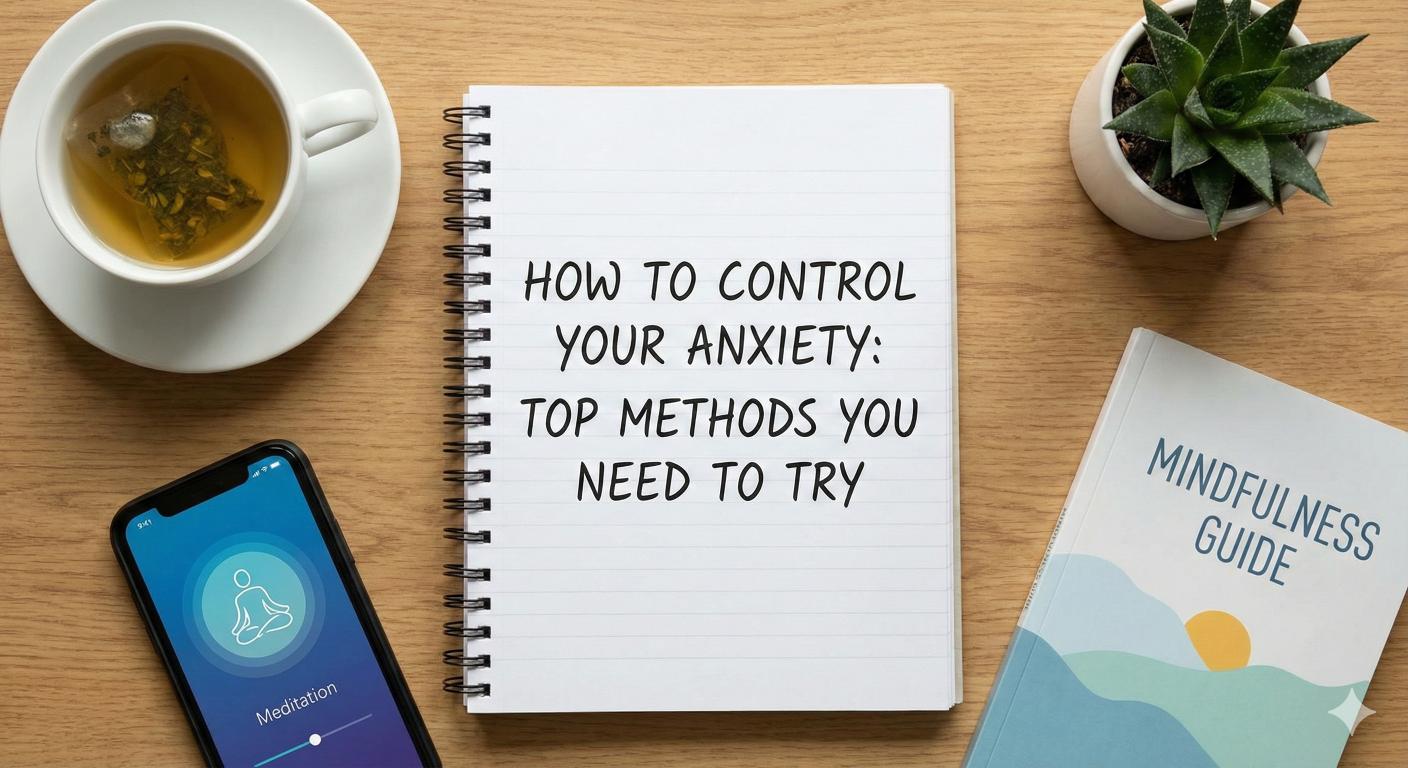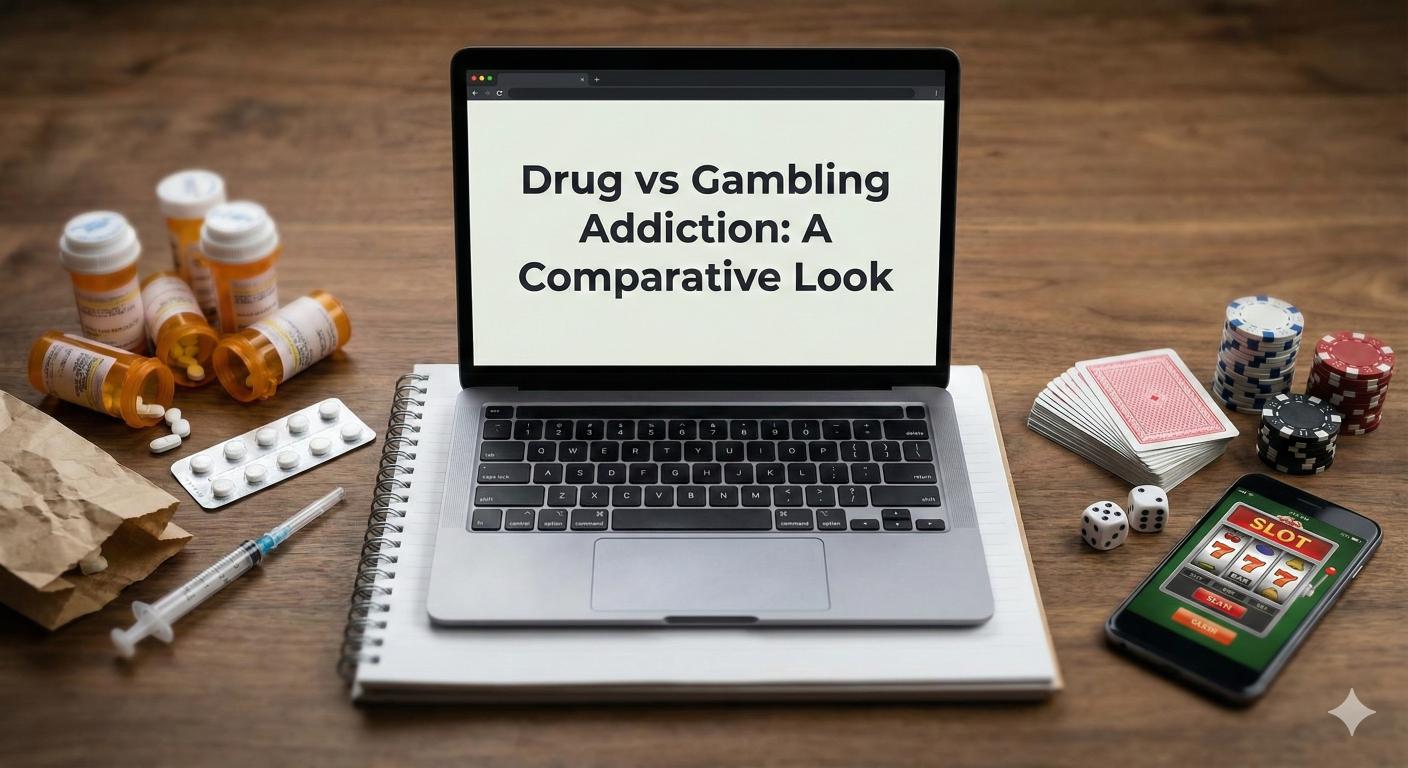DBT Approaches for Eating Disorder Journey
Explore dialectical behavior therapy (DBT) for eating disorders and empower lasting change in recovery.


Understanding DBT for Eating Disorders
Overview of DBT for EDs
Dialectical Behavior Therapy (DBT) is a therapeutic approach that has gained recognition for its effectiveness in treating various mental health issues, including eating disorders. DBT combines cognitive-behavioral techniques with mindfulness practices, aiming to help individuals manage intense emotions and foster healthier coping mechanisms. Research indicates that DBT can provide significant positive effects for individuals dealing with eating disorders, specifically in treating binge eating disorder (BED). For example, one study reported that 89% of participants taught DBT skills did not binge eat compared to only 12.5% in a control group [1].
DBT sessions typically consist of individual therapy paired with group skill training sessions. The individual therapy includes hour-long sessions with a trained DBT therapist, while the group component focuses on developing specific skills needed to manage emotions and behaviors. These combined efforts create a structured environment aimed at promoting recovery and growth.
Efficacy of DBT for Adolescents
DBT has shown promise as an alternative treatment for adolescents suffering from eating disorders. Cognitive behavior therapy (CBT) and DBT have both been recognized as effective treatment modalities when compared to traditional family-based approaches. Although there is a need for more efficacy trials establishing the effectiveness of DBT, existing studies suggest it may be reasonably feasible and acceptable across varying diagnoses and levels of care for adolescents.
The structured nature of DBT, combined with its focus on emotional regulation and distress tolerance, makes it particularly beneficial for adolescents who often face significant emotional challenges related to their eating behaviors. These DBT techniques, which include skills such as dialectical abstinence and urge surfing, help young individuals cope with overwhelming feelings without resorting to harmful eating patterns [4].
In summary, DBT provides a valuable framework for adolescents confronting eating disorders. Its focus on skill development and emotional awareness supports recovery, making it a compelling option within the landscape of eating disorder treatments. For further understanding of the variety of eating disorders and their symptoms, check out our guide on understanding eating disorders: types and symptoms.

Core Skills in DBT for EDs
Dialectical Behavior Therapy (DBT) for eating disorders incorporates crucial skills, specifically focusing on mindfulness and emotion regulation. These skills are designed to help individuals manage their emotional experiences and reduce harmful behaviors associated with eating disorders.
Mindfulness in DBT
Mindfulness is a fundamental aspect of DBT. It teaches individuals to become aware of their thoughts, feelings, and bodily sensations in the present moment without judgment. This practice allows someone with an eating disorder to observe their cravings, emotions, and triggers without immediately reacting.
Benefits of mindfulness include:
Mindfulness can lead to healthier eating behaviors by fostering a greater understanding of why certain feelings may drive disordered eating. Individuals learn to recognize the sensations of hunger and fullness, aiding in a balanced relationship with food.
To effectively practice mindfulness, one can engage in exercises such as deep breathing, body scans, or mindful eating, which encourages savoring each bite to enhance the eating experience.
Emotion Regulation Techniques
Emotion regulation is another key skill taught in DBT specifically for managing eating disorders. This involves techniques aimed at reducing symptoms such as bingeing or purging, which often serve as temporary relief from negative emotions.
Some effective emotion regulation strategies include:
These strategies empower individuals to manage their emotional responses effectively, thereby minimizing reliance on maladaptive behaviors like disordered eating. Through DBT, clients learn to process their emotions constructively and can gradually develop a more positive self-image.
For those interested in a deeper understanding of eating disorders, explore our articles on understanding eating disorders: types and symptoms, anorexia nervosa: more than just extreme dieting, and bulimia nervosa: the binge-purge cycle explained.

Techniques in DBT for EDs
Dialectical Behavior Therapy (DBT) provides a range of techniques designed to help individuals struggling with eating disorders. Among these techniques are dialectical abstinence, urge surfing, and the alternative rebellion approach. Each technique serves a unique purpose in supporting individuals on their journey toward recovery.
Dialectical Abstinence
Dialectical abstinence is a crucial technique in DBT aimed at helping individuals find balance in their eating behaviors. This approach encourages individuals to abstain from harmful eating patterns while allowing for the acceptance of their feelings and experiences. It promotes the idea that abstinence does not mean living without enjoyment or connection to food. Rather, it is about finding a middle ground that allows individuals to engage with food mindfully without resorting to unhealthy behaviors.
By practicing dialectical abstinence, individuals learn to understand their urges to binge or restrict and recognize that these urges do not define their actions. This technique is rooted in the principles of radical acceptance, allowing individuals to confront their feelings without judgment.
Urge Surfing in DBT
Urge surfing is a skill used in DBT for managing cravings and urges to engage in harmful eating behaviors. The concept is based on the idea that urges are like waves—they rise and fall over time. Instead of trying to eliminate urges, individuals are taught to ride the wave and observe their feelings without acting on them.
During urge surfing, individuals are encouraged to focus on their breath and develop awareness of the physical sensations accompanying their urges. By doing so, they can create distance between themselves and their impulses, allowing the urge to gradually subside. This technique helps individuals build tolerance to discomfort and reinforces the idea that cravings are transient experiences.
Alternative Rebellion Approach
The alternative rebellion approach encourages individuals to find healthier ways to express their desire for rebellion. Traditional eating disorders may involve acting out through harmful behaviors such as bingeing or purging. This technique helps individuals identify and articulate their need for rebellion and channel it into constructive actions that do not involve food.
For example, instead of engaging in harmful eating behaviors, individuals might choose to participate in physical activities, artistic expressions, or social interactions that fulfill their need for rebellion in healthier ways. This approach emphasizes self-efficacy, allowing individuals to reclaim their autonomy without resorting to detrimental habits.
The techniques of dialectical abstinence, urge surfing, and alternative rebellion in DBT are vital tools for individuals embarking on recovery from eating disorders. By incorporating these skills, individuals can cultivate greater self-awareness, emotional regulation, and ultimately enhance their path to healing. For more understanding on eating disorders, visit understanding eating disorders: types and symptoms.

Comparing DBT and CBT for EDs
Efficacy of DBT and CBT
Dialectical Behavior Therapy (DBT) and Cognitive Behavioral Therapy (CBT) have been shown to be equally effective for individuals suffering from bulimia nervosa and binge eating disorder, particularly for those who did not benefit from earlier self-help tactics [4]. DBT employs emotional regulation techniques to address eating disorders. This therapy is beneficial for reducing harmful behaviors such as purging and bingeing, which are often used as methods to cope with negative emotions or feelings of vulnerability [2].
Originally developed for borderline personality disorder, DBT has been adapted for use with various eating disorders, including binge eating, bulimia, and anorexia. While DBT serves as an evidence-based approach, it is frequently complemented by CBT. The key difference lies in CBT's focus on altering thought patterns to address undesired behaviors, while DBT emphasizes building coping skills to manage authentic emotional responses [5].
Therapy TypeFocus AreaTreatment TypeEffectivenessDBTEmotional regulation and coping skillsEvidence-basedEqual efficacy to CBT for bulimia and binge eatingCBTAltering thought patternsEvidence-basedEffective for various eating disorders
Treatment Approaches for Bulimia
DBT is an effective therapeutic choice for treating bulimia, as it equips individuals with the skills needed to cope with relationship stressors associated with disordered behaviors. This method addresses both emotional and behavioral aspects, making it a solid treatment option for conditions like bulimia nervosa [6].
Utilizing DBT for bulimia, individuals learn to navigate their emotional turmoil through various coping techniques, which can help them achieve more stability and reduce the urge to engage in harmful eating behaviors. Furthermore, this holistic approach encompasses strategies to understand and process emotions, which can significantly contribute to recovery and well-being.
For more details about specific eating disorders such as bulimia, check our resource on bulimia nervosa: the binge-purge cycle explained. Additionally, information on other disorders can be found including anorexia nervosa: more than just extreme dieting and binge eating disorder: when food becomes a coping mechanism.

Implementing DBT for ED Treatment
Dialectical Behavior Therapy (DBT) for eating disorders (EDs) involves a structured approach that combines individual therapy, group skills training, and crisis coaching. Understanding the structure of DBT sessions is essential for both patients and practitioners.
Structure of DBT Sessions
DBT sessions typically incorporate several key components:
The structured nature of DBT sessions helps individuals who struggle with EDs develop effective coping mechanisms while providing a supportive environment for personal growth.
Accessibility and Challenges
Accessing DBT for eating disorders can present several challenges. The limited number of clinicians trained specifically in DBT for EDs poses a significant barrier to treatment. Additionally, many patients may encounter difficulties with insurance coverage for this type of intensive therapy.
Moreover, evaluations of DBT have shown positive outcomes in various settings, such as reduced restrictive actions by staff and fewer psychiatric inpatient admissions [8]. However, challenges remain:
Addressing these challenges is crucial for improving the accessibility and effectiveness of DBT for individuals struggling with eating disorders. Understanding the structures and barriers inherent in DBT can help stakeholders work toward more effective treatment options for those in need. For a deeper dive into eating disorders, check out resources on understanding eating disorders: types and symptoms or cognitive-behavioral therapy (CBT) for eating disorders.

Success Stories and Research Findings
Positive Outcomes of DBT
Dialectical Behavior Therapy (DBT) has shown significant promise in the treatment of various eating disorders (EDs). Research indicates favorable outcomes for patients undergoing DBT. For instance, one study found that individuals with binge-eating disorder (BED) who received DBT skills training achieved notable success. Specifically, 89% of participants did not engage in binge eating after treatment, compared to only 12.5% in the control group. Additionally, another study indicated that 40% of DBT participants refrained from binge eating, while only 3.3% of the control group achieved similar results [1].
The efficacy of DBT extends beyond binge eating. In a study focusing on women with anorexia, participants underwent an average of 21.7 weeks of DBT. The results were striking: 35% of patients achieved full remission, and 55% reached partial remission. Furthermore, there was a significant increase in their post-treatment Body Mass Index (BMI), demonstrating not just psychological improvement but also physical health benefits.
Outcome MeasureFull RemissionPartial RemissionIncreased BMIAnorexia Study Results35%55%Significant
Impact of DBT on Anorexia
DBT's effectiveness in treating anorexia has been validated through various studies, reinforcing its role as a valuable therapeutic approach. The same study that tracked outcomes for anorexia patients showcased the overall success of DBT. In addition to the remission rates, many participants reported enhanced coping strategies and a reduction in self-harming behaviors.
The patients who completed DBT not only showed significant improvements in their eating behaviors but also experienced meaningful shifts in their emotional regulation abilities. This comprehensive improvement highlights DBT's dual focus on emotional well-being and behavioral change, crucial for individuals struggling with anorexia nervosa.
Through these positive outcomes and impactful results, it becomes increasingly clear why dialectical behavior therapy (DBT) for eating disorders is being embraced as a leading treatment method for various eating disorders. By incorporating DBT into treatment plans, clinicians can offer patients a structured and effective approach to recovery.
References
[2]:
[3]:
[4]:
[5]:
[6]:
[7]:
[8]:
More Resources
A team ready to start your journey.
Get in touch — today.
We are a safe space – a haven for exceptional individuals to receive discreet, personalized, in-person treatment and care.
.avif)










